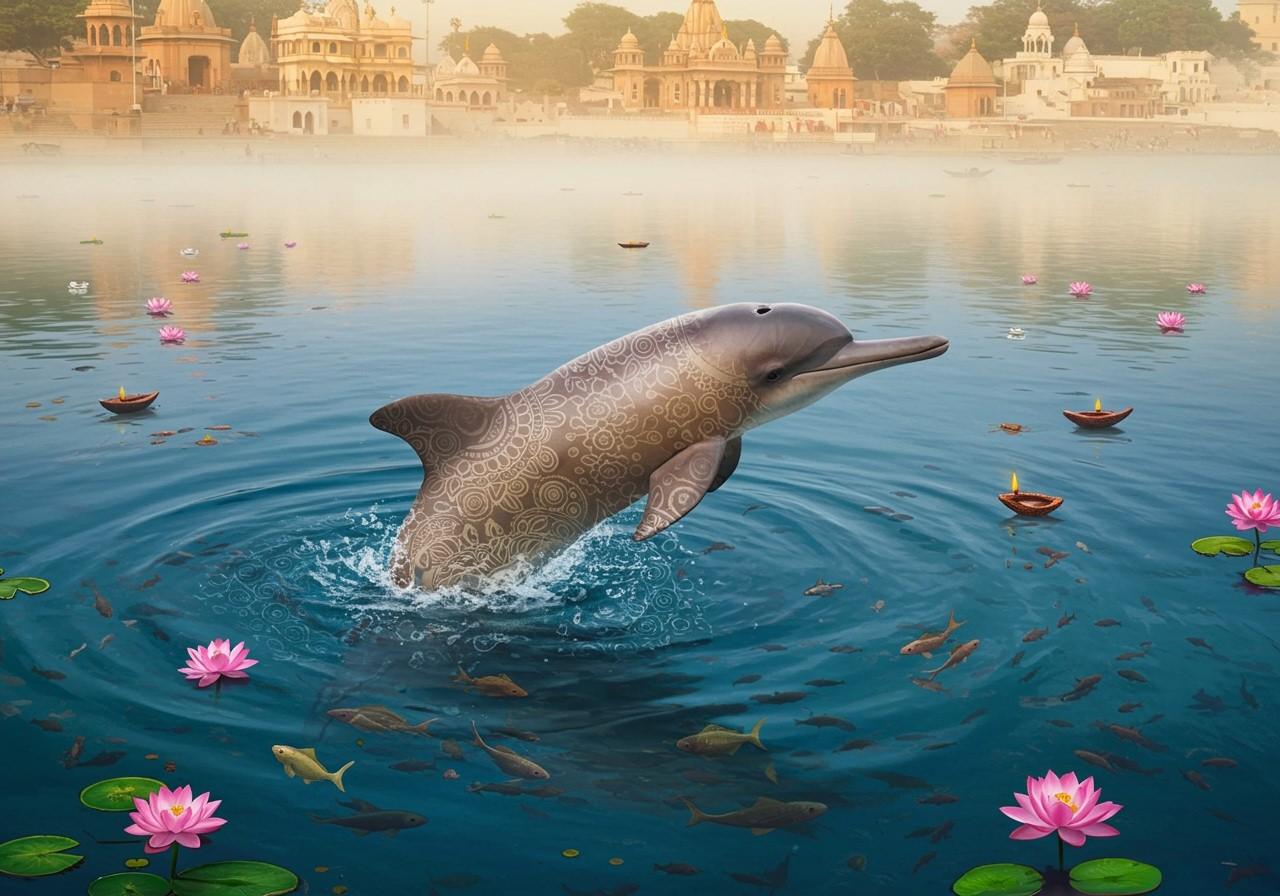
The Ganges River Dolphin, affectionately known as the ‘Susu,’ holds a special place in India’s natural and cultural heritage. This blog post explores the dolphin’s significance, the threats it faces, and the ongoing efforts to protect this endangered species. We’ll delve into its habitat, ecology, and the crucial role communities play in its conservation.
Historical and Cultural Significance
The Ganges River Dolphin’s presence in ancient texts and folklore highlights its long-standing connection to Indian culture. The Ganges River, revered as a spiritual symbol, is deeply intertwined with the dolphin’s story. The Susu, often seen as a symbol of purity and life, embodies the river’s sacred status. Traditional practices, passed down through generations, have played a crucial role in its conservation over the centuries.
Habitat and Ecology
The Ganges River Dolphin inhabits the freshwater ecosystems of the Ganges-Brahmaputra-Meghna and Sangu-Karnaphuli river systems in India, Nepal, and Bangladesh. Uniquely adapted to these rivers, this functionally blind dolphin relies on echolocation to navigate and find prey, primarily fish and invertebrates. As an apex predator, it plays a vital role in maintaining the health and biodiversity of these river systems.
Endangered Status
Sadly, the Ganges River Dolphin is classified as endangered by the IUCN since 1996. Several factors contribute to its precarious status, with pollution, habitat fragmentation due to dams and other infrastructure, and unsustainable fishing practices posing significant threats. The species has disappeared from many parts of its historical range, and current estimates suggest only 2,500-3,000 individuals remain in the wild.
Conservation Efforts
Numerous organizations and initiatives are dedicated to protecting the Ganges River Dolphin. Government agencies, NGOs, and research institutions are working together to implement conservation strategies. These efforts focus on habitat restoration, reducing pollution, mitigating the impact of fishing gear, and promoting community involvement. Projects like the government-led initiatives for the Ganges River Dolphin have shown promising results.
Community Involvement
Local communities living along the riverbanks play a crucial role in the dolphin’s conservation. Traditional fishing practices that minimize harm to the dolphins, combined with community-led monitoring and awareness campaigns, are invaluable. Educational programs and outreach initiatives foster a sense of responsibility and stewardship among local populations, empowering them to actively participate in protecting this endangered species.
Future Prospects and the Role of Poojn.in
The future of the Ganges River Dolphin hinges on continued and strengthened conservation efforts. Integrating technology, scientific research, and policy changes are crucial for long-term success. Addressing the impacts of climate change on river ecosystems is also essential. Poojn.in, India’s largest cultural goods and services store, recognizes the importance of environmental stewardship and offers products that align with these values.
How Poojn.in Supports Ganga Conservation Efforts
Poojn.in is committed to providing eco-friendly options that minimize environmental impact. By choosing sustainable alternatives for your puja needs, you contribute to the well-being of the Ganges River and its inhabitants, including the Ganges River Dolphin.
- Mangalam Camphor with Butter Paper: This camphor is packaged in butter paper, a biodegradable alternative to plastic, reducing waste that could pollute the Ganges. Opting for this eco-friendly option helps protect the river’s delicate ecosystem and its inhabitants.
- Ganga Shiva Murti: Honor the sacred connection between Lord Shiva and the Ganges with this murti. By choosing this, you acknowledge the river’s spiritual significance and the need for its preservation.
- Learn More About the Ganges River: Explore our blog post on the spiritual significance of the Ganges to deepen your understanding of this sacred river and its importance in Indian culture.
FAQs on the Ganges River Dolphin
What makes the Ganges River Dolphin unique? The Ganges River Dolphin is a freshwater species adapted to riverine environments. It is functionally blind and uses echolocation to navigate and hunt.
What are the primary threats to the Ganges River Dolphin? Pollution, habitat loss due to dams and other infrastructure, and accidental entanglement in fishing nets are the major threats.
How can I contribute to the conservation of the Ganges River Dolphin? Supporting conservation organizations, reducing your plastic consumption, and spreading awareness about the dolphin’s plight are all valuable contributions.
Conclusion
The Ganges River Dolphin, a symbol of India’s natural heritage, faces a critical juncture. However, through dedicated conservation efforts and community involvement, there is hope for its survival. By understanding the challenges and actively participating in solutions, we can ensure that future generations have the opportunity to witness the majesty of this remarkable creature in its natural habitat.
Explore more about India’s sacred sites and cultural heritage on poojn.in. Learn about the Jyotirlingas of India or delve into the divine feminine in Hinduism. Discover more about Prayagraj, a city of deep spiritual significance.


